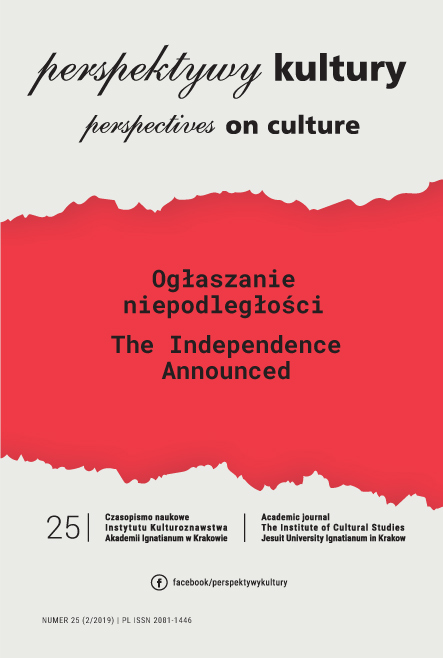Anonymous in Hungary. P dictus Magister’s Gesta, Age and Pusztaszer – About the Truth of Writing History
Abstract
One of the most frequently quoted and examined topic of the historiograpy of the Hungarian Middle Ages is P dictus magister and his work, Gesta Hungarorum. Throughout the many hundred years of research, there had been several occasions when the author of the Gesta was thought to be identified. Unfortunately, he was not, as there is no consensus on his identity until this day. The starting point for almost all the experts on the topic was the same, which meant two alternatives. Firstly, that “P” was in most cases supposed to stand for the Latin “prae” preposition, and secondly, that it was the initial letter of the author’s name (eg. Petrus, Paulus, or Pósa). We can say that research was determined by these two hypotheses.
I based my research on the fact that P dictus magister was a learned, educated man of the Middle Ages, who was a scholar of literature, a key figure, whose ideas were characterised by spiritual, biblical, theological way of thinking – all of them typical of the age.
According to my conclusions, the Gesta must have been written after 1206 and before 1217, when Kalán, the bishop of Pécs, who was the author of the Gesta in my opinion, took the sign of the cross between 1214 and 1217. We can see that the Gesta reflects the crusaders’ ideals. Bishop Kalán must have had the knowledge to write the work, he must have known the places, and his service at the chancellery, as a governor, and as the bishop of Pécs made him absolutely suitable for it.
Riferimenti bibliografici
Accademia Carrara, Archivio Commissaria, buste 31 e 35.
Accademia Carrara, Archivio opere, inv. 58AC00471.
Borea E., Per la fortuna dei primitivi: la Istoria Pratica di Stefano Mulinari e la Venezia Pittrice di Gian Maria Sasso, in: Hommage à Michel Laclotte. Études sur la peinture du Moyen Âge et de la Renaissance, Electa-Réunion des Mu¬sées Nationaux, Milano–Paris 1994, pp. 503-521:
Borean L., Ad vocem “Cristoforo Orsetti,” in: Il collezionismo d’arte a Venezia, Vol. 2, Il Seicento, eds. L. Borean, S. Mason, Marsilio, Venezia 2007, p. 297.
Borean L., Mason S., Cristoforo Orsetti e i suoi quadri di “perfetta mano,” in: Figure di collezionisti a Venezia tra Cinque e Seicento, eds. S. Mason, L. Borean, Forum, Udine 2002, pp. 119-157.
Catalogo dei quadri esistenti nelle Gallerie della Accademia Carrara di belle arti in Bergamo, Bolis, Bergamo 1881.
Cordellier D., Py B., Musée du Louvre. Cabinet des Dessins. Inventaire général des dessins italiens, Vol. 5, Raphaël, son altelier, ses copistes, Réunion des Musées Nationaux, Paris 1992.
Frabretti G., L’Ortolano, Amilcare Pizzi, Ferrara 1966.
Gardner E., A bibliographical repertory of Italian private collections, Vol. 3, Neri Pozza, Venezia 2005.
Gianni C., Accademia Carrara: restauri 1835-1839, “Osservatorio delle arti,” 1, 1988, pp. 74-95.
Giordano S., Ad vocem “Lorenzo da Bergamo,” in: Dizionario Biografico degli Italiani, Vol. 66, Istituto della Enciclopedia Italiana Treccani, Roma 2006, pp. 58-60.
Girelli S., La collezione della famiglia Orsetti all’Accademia Carrara di Bergamo: l’acquisto del 1804 e la successiva parziale dispersione, tesi di laurea, Università Cattolica del Sacro Cuore, Brescia, relatore G. Valagussa 2013-2014.
Guida di Bergamo (1824) di Girolamo Marenzi, ed. C. Solza, Lubrina, Bergamo 1985.
Haskell F., Some Collectors of Venetian Art at the End of the Eighteenth Century. Della Lena’s “Esposizione istorica dello spoglio, che di tempo in tempo si fece di Pitture in Venezia,” in: Studies in Renaissance and Baroque Art presented to Anthony Blunt on his 60th birthday, Phaidon, London–New York 1967, pp. 173-178.
Manca M.E., Accademia Carrara 1796-1835: la gestione commissariale tra conservazione e innovazione, in: Giacomo Carrara (1714-1796) e il collezionismo d’arte a Bergamo, eds. R. Paccanelli, M.G. Recanati, F. Rossi, Accademia Carrara, Bergamo 1999, pp. 323-330.
Mandelli V., Studi di famiglie e di collezionismo a Venezia nel Sei e Settecento, “Saggi e Memorie di storia dell’arte,” 31, 2007, pp. 237-294.
Mazzocca F., Mito e immagine di Raffaello nella prima metà del XIX secolo, in: Raffaello e l’eco del mito, eds. E. Daffra, G. Di Pietrantonio, M.C. Rodeschini, Marsilio-Electa, Venezia–Milano 2018, pp. 87-105.
Meyer zur Capellen J., Raphael. A critical catalogue of his paintings, Vol. 3, The Roman Portraits, ca. 1508-1520, Arcos, Landshut 2008.
Moschini G., Della letteratura veneziana del secolo XVIII fino a’ nostri giorni, Vol. 3, Stamperia Palese, Venezia 1806.
Paccanelli R., Tra erudizione e mecenatismo: itinerario biografico di un collezionista illuminato, in: Giacomo Carrara (1714-1796) e il collezionismo d’arte a Bergamo, eds. R. Paccanelli, M.G. Recanati, F. Rossi, Accademia Carrara, Bergamo 1999, pp. 95-162.
Passavant J.D., Raphaël von Urbino und sein Vater Giovanni Santi, Vol. 2, F.A. Brockhaus, Leipzig 1839.
Ridolfi C., Le maraviglie dell’arte, 2 voll., Giovanni Battista Sgava, Venezia 1648.
Rossi F., Accademia Carrara, catalogo dei dipinti, Grafica Gutenberg editrice, Bergamo 1979.
Rossi F., Accademia Carrara, 1824: la “Guida” di Gerolamo Marenzi, “Osservatorio delle arti,” 3, 1989, pp. 74-103.
Walek J., The Czartoryski Potrait of a Youth by Raphael, “Artibus et historiae,” 24, 1991, pp. 201-224.
Zanotto F., Pinacothèque Barbini-Breganze décrite et illustrée, avec des notes, Gaspari, Venezia 1847.
Copyright (c) 2020 Perspectives on Culture

Questo lavoro è fornito con la licenza Creative Commons Attribuzione - Non opere derivate 4.0 Internazionale.
Autor, zgłaszając swój artykuł, wyraża zgodę na korzystanie przez Wydawnictwo Uniwersystet Ignatianum z utworu na następujących polach eksploatacji:
- utrwalania utworu w formie papierowej, a także na nośniku cyfrowym lub magnetycznym;
- zwielokrotnienia utworu dowolną techniką, bez ograniczenia ilości wydań i liczby egzemplarzy;
- rozpowszechniania utworu i jego zwielokrotnionych egzemplarzy na jakimkolwiek nośniku, w tym wprowadzenia do obrotu, sprzedaży, użyczenia, najmu;
- wprowadzenia utworu do pamięci komputera;
- rozpowszechniania utworu w sieciach informatycznych, w tym w sieci Internet;
- publicznego wykonania, wystawienia, wyświetlenia, odtworzenia oraz nadawania i reemitowania, a także publicznego udostępniania utworu w taki sposób, aby każdy mógł mieć do niego dostęp w miejscu i czasie przez siebie wybranym.
Wydawca zobowiązuje się szanować osobiste prawa autorskie do utworu.





